This is part 6 of my series on
Color Photos of World War II. I am not pretending that these are original color photographs. You should assume that all are colorized, though I am not absolutely certain in some cases whether they are color originals or colorized recently (and some original color photographs were quite good with a high resolution if done under proper conditions).
Generally, the artist that colorizes a photo brands it with a watermark, else there is no way to know who did it. There are some real artists in the field, too. While there was color film available throughout the war, it was seldom used because it was expensive to both purchase and develop (you had heavy costs on both ends of using regular film). Color film was unusable in the newspapers and most magazines that photographs were typically taken for.
As usual, I try to bring an assortment of photographs from a broad range of theaters of war and activities. This includes pictures of both Allied and Axis troops. Colorized photographs of World War II still remain in relatively short supply, though that is rapidly changing as digital programs improve. Unfortunately, there aren't many color photos of Japanese soldiers yet, so they require a bit of a search.
These photos are not how they originally appeared. Thus, they may offend some purists. However, the whole point of photographs is to reflect reality, and a good colorization job can do that better than a black-and-white original. Thus, I like colorized photographs as long as they are done well and the colors reflect reality. They can bring you into the moment and remove the mists of time.
I do draw the line at fakes, which can be quite hard to spot and unfortunately do slip through. Most photos are obvious colorizations because the originals are familiar, but sometimes the black-and-white originals themselves were from some long-forgotten film set. So, if you see any shots from old film sets or the like, kindly leave a comment below and I will remove them. Seeing a watermark on a color photo is a pretty good indication that it is from an authentic World War II photo - because who is going to go to the trouble of colorizing a fake?
One of the themes of this particular page of color photographs of World War II is that I tried to include photos of some of the varied troops that fought in the Wehrmacht. So, we have Indian troops, Spanish Blue Division troops, and so forth. Just like troops of varied nationalities fought for the Allies, so, too, did they fight for the Axis.
 |
| A PRU Seafire pilot has his aircraft camera installed for a flight. He is well-attired, with a B flight helmet, Mae West LPU, D oxygen mask, Mk VII goggles, leather gloves, seat C-2 parachute harness and standard RAF battle dress uniform for flight. |
You may find more color photos of World War II on
page 1 and
page 2 and
page 3 and
page 4 and
page 5 and
page 6 and
page 7 and
page 8 and
page 9 and
page 10 and
page 11 and
page 12 and
page 13 and
page 14 and
page 15 and
page 16 of this series.
 |
| A column of StuG IIIs in the Caucasus, summer of '42. |
 |
| Churchill tank. "Hande hoch!" Just kidding. |
 |
| Heinrich Himmler and Hitler watching military maneuvers, Muenster, 1940. Hitler is somewhat self-consciously adopting the posture of a Prussian warlord with his jack-booted left foot forward. The picture is usually cropped off to show only the fellows on the left, but you also may have heard of the guy almost out of frame on the right, completely unknown in 1940 - Himmler's adjutant, Joachim Peiper. |
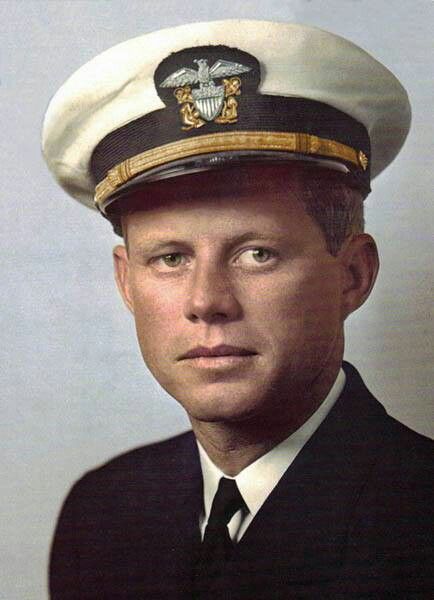 |
| Future President John F. Kennedy during World War II. |
 |
| Renault R35, an abbreviation of Char léger Modèle 1935 R or R 35, and French Crew. The short 37mm gun wasn't very good as an anti-tank weapon, as they came to realize not long after this photo was taken. |
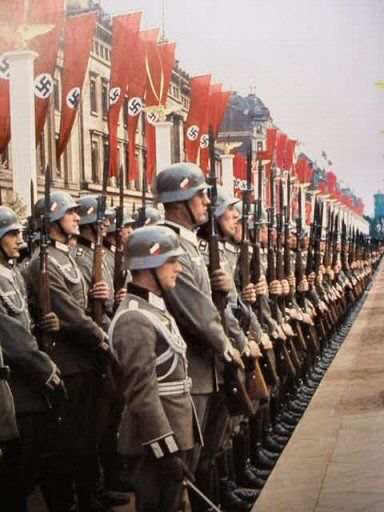 |
| Hitler's birthday, 20 April 1939. This is considered by some to have been Hitler's most elaborate and carefree birithday, with only successes behind him and no war to worry about. |
 |
| StuG III assault gun used in Operation Wacht am Rhein (Watch on the Rhine), starting on 16 December 1944 in the Ardennes. |
 |
| Another StuG III, one of Germany's most cost-effective weapons. |
 |
| Paratroopers of 1st Battalion, Royal Ulster Rifles, 6th Airlanding Brigade, 6th Airborne Division, aboard a Jeep and trailer. They are cruising past a crashed Airspeed "Horsa" glider, Landing Zone 'N', north of Ranville, Normandy, France. 6 June 1944. |
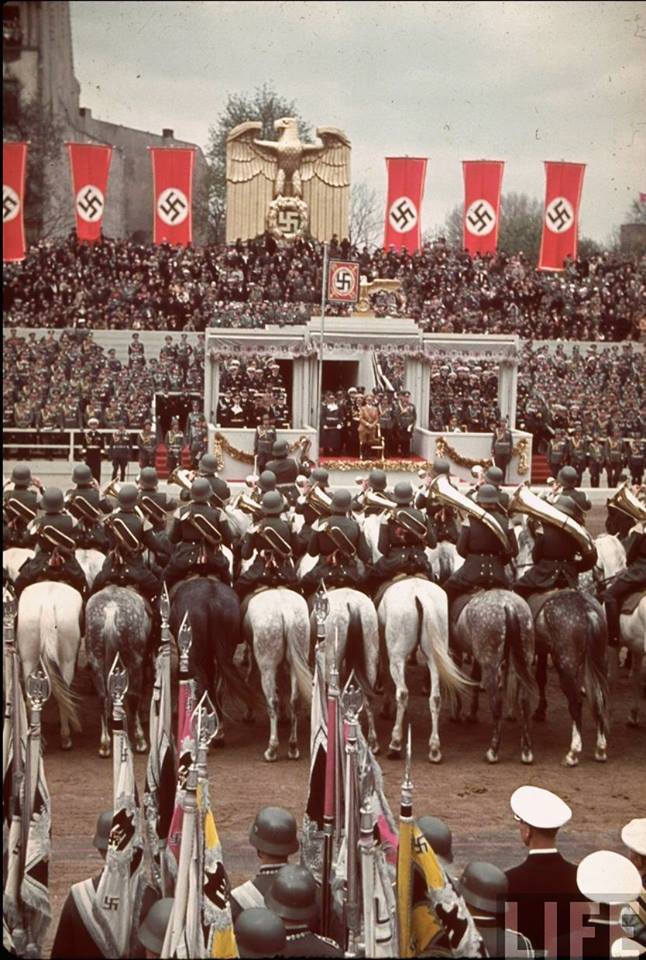 |
| Berlin, 20 April 1939. Hitler's birthday always was a big event. Horses, incidentally, played a critical role in the Wehrmacht despite all the propaganda about the Wehrmacht leading the world in using motor vehicles in the military (which in many ways it did, but it still relied heavily on horses). |
 |
| A snow-camouflaged M4A3 76w Sherman tank with a 76mm gun, belonging to the 709th or 750th Tank Battalion, supporting the 75th Infantry Division, driving through the village of Riedwihr (now Porte-du-Ried) in the Colmar region of France, 31 January 1945. |
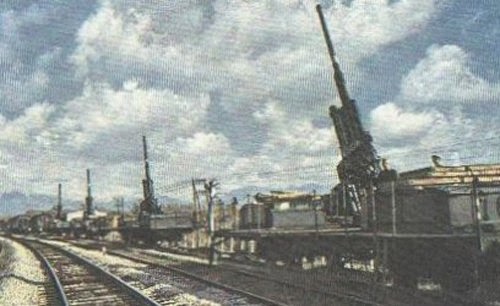 |
| 10.5 cm FlaK 38 anti-aircraft mounted on a train. These were capable guns, but they were heavier than the famous 8.8 cm FlaK 18 ("German 88s") and thus less mobile. They worked well on flak trains, though. A naval version was used on the Bismarck and Scharnhorst classes of battleships as well as the Deutschland- and Admiral Hipper-class cruisers. |
 |
| An M4A3 Sherman of the 771st Tank Battalion of the 84th "rail Splitter" Division. This is after fighting in the German town of Linnich on February 24th of 1945. |
 |
| You probably don't want to go into battle with those mines piled right next to your turret. |
 |
| Canadian Sherman tanks from the Canadian, Governor General’s Horse Guards Armoured Regiment parked in Arnhem. Spare tracks are used as armor on the front of the tanks. The photo was taken on April 15, 1945. |
 |
| U.S. Army nurses beside a 40mm anti-aircraft gun (I know some of you are more interested in the gun than the girls!) aboard a Coast Guard-manned troop transport heading back to the States in 1945. |
 |
| A member of the 8th SS Panzer Division "Florian Geyer" holds a Tellermine 43. These were designed as mines to be buried, but aggressive Wehrmacht troops used them as improvised anti-tank weapons. One imagines that a Soviet tank is approaching from the right. If you timed it just right and hit a tank's treads, you could disable it and maybe even turn it on its side, depending on where it landed. Of course, if your timing wasn't just right... |
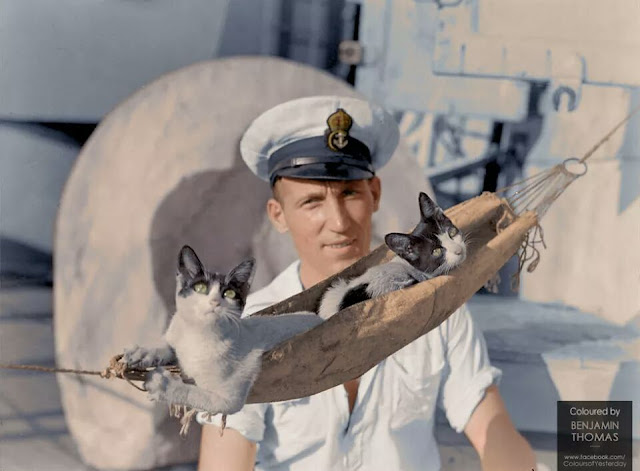 |
| Aboard HMAS Nizam, the ship’s cat has a custom-made hammock, June 1941. |
 |
| Cutting the wires was usually the first step in every offensive. |
 |
| A US 90 mm Gun Motor Carriage, M36, Jackson tank destroyer with a 90 mm gun on Rue François de Curel in the French city of Metz. Company ‘C’, 607th Tank Destroyer Battalion. November 20, 1944. |
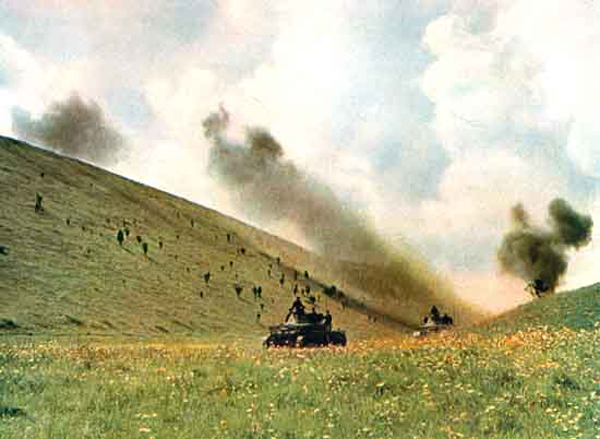 |
| The endless southern Russian fields full of sunflowers eventually swallowed up the Wehrmacht. |
 |
| A Greek soldier of the 8th Infantry Division on an Italian tankette Carro Veloce CV-33. This is at the Battle of Elaia-Kalamas, North Epirus, Greece, in November 1940, when the Greeks successfully stopped the Italians and began pushing them back into Albania. |
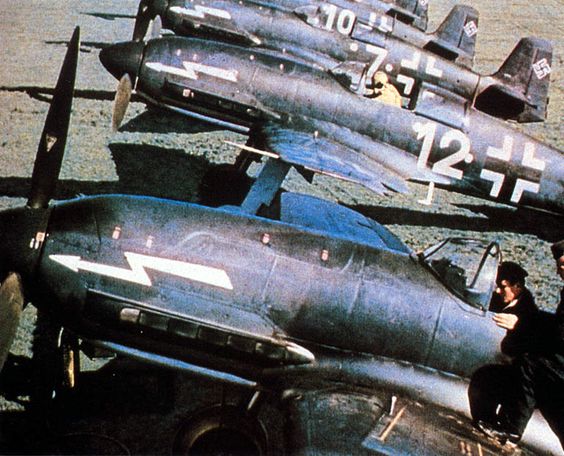 |
| Heinkel He 100D fighters. About 19 were built. These were capable of speeds in the 644 km/h (400 mph) range, which was very good for the time, but the Luftwaffe (for unknown reasons which may have involved simple favoritism/payoffs) decided to concentrate on the Bf 109 instead (Messerschmidt was a great salesman). These were built at the beginning of World War II, and probably never saw combat, but they were available. |
 |
| This photo was on the cover of Yank Magazine, Continental Edition on January 14, 1945. The cover article was entitled “Present Arms” and featured Pfc. Robert Leigh and his collection of enemy weapons taken by the 83rd Infantry Division during the Battle of the Hürtgen Forest (notice the MP.38 and MP.40s, an MG.34 and an MG42). [Colorized by Paul Reynolds]. |
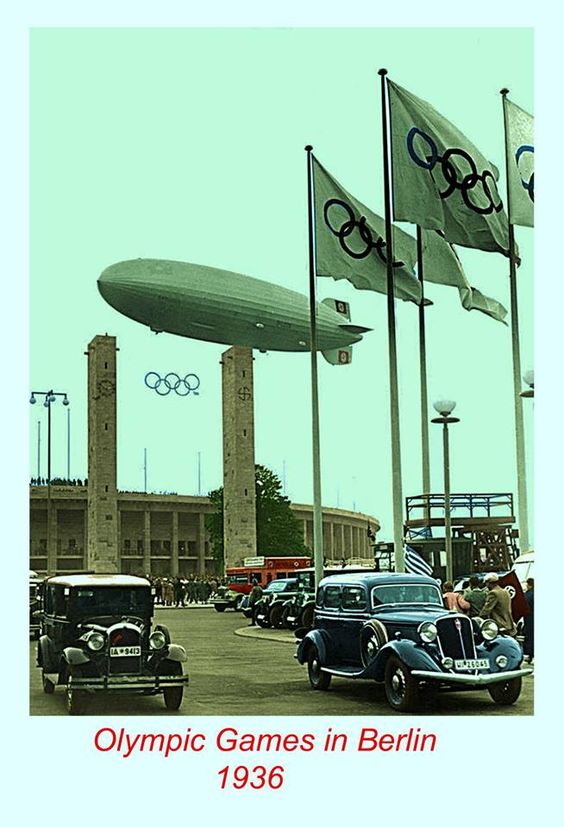 |
| The Hindenburg flies over the Olympiastadion in Berlin as part of the processions for the 1936 Summer Olympics. |
 |
| This picture, in the original black and white and cropped, graced the cover of the 19 July 1943 Life magazine. The woman is Shirley Slade, a World War II WASP pilot of B-26 and B-39s. |
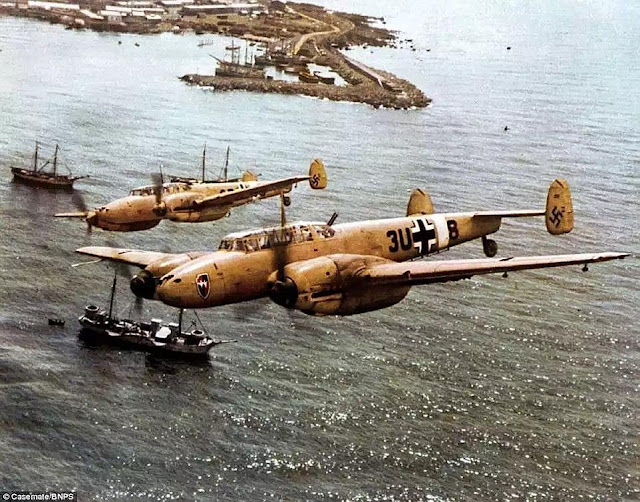 |
| Bf 110s flying over Sicily, 1942. These Messerschmidt twin-boom aircraft were very dependable and useful aircraft, despite the poor reputation they acquired during the Battle of Britain. Incidentally, it is okay to call them ME-100s, even the Wehrmacht did that occasionally in official documents. |
 |
| Finnish firefighters fighting a fire in Helsinki, June 25, 1941. |
 |
| An American G.I. inspects German artillery captured or destroyed in the battle of El Guettar, April 1943. |
 |
| The Spanish Blue Division (called División Española de Voluntarios by the Spanish Army and 250. Infanterie-Division by the Germans) did good work for the Wehrmacht in the Leningrad sector into 1943, with some remaining into spring 1944. |
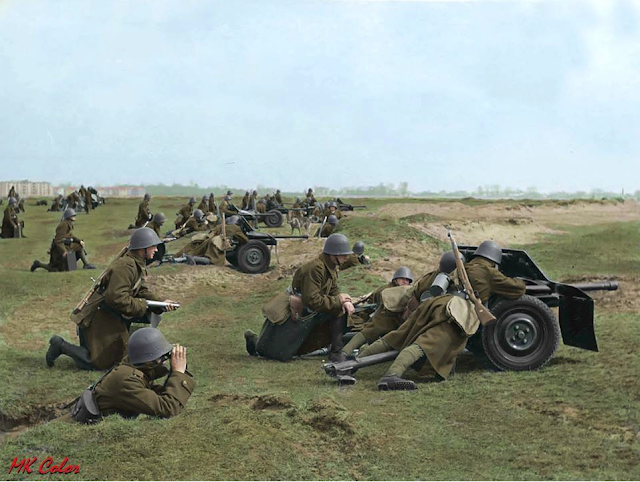 |
| Polish troops during maneuvers, 1939. |
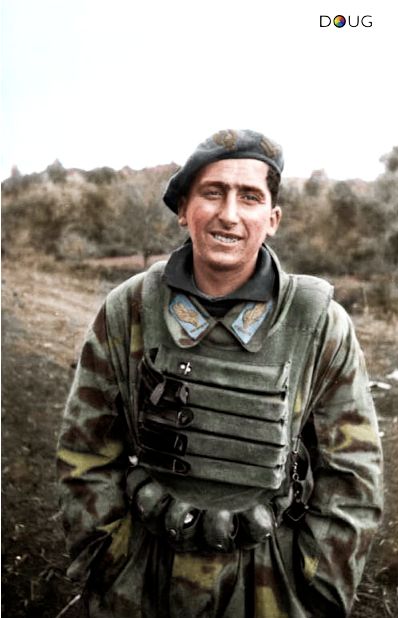 |
| A member of the Italian 184th Paratroopers Division Nembo (184th Divisione Paracadutisti Nembo) on the Anzio-Nettuno front (c. Jan/Feb '44). This was part of the effective Axis defense against Allied Operation Shingle, when the division helped contain the landings at Anzio for quite some time. |
 |
| U.S. Army troops of the 2nd Infantry Division in the liberated village of Colleville-Sur-Mer near Omaha Beach, 8 June 1944. |
 |
| Romanian soldiers in Constanta, Romania, circa Oct 1941 (Horst Grund, Federal Archive). |
 |
| Captured German soldiers, with a very nervous-looking guard, look startled to see British Field Marshal Bernard Montgomery drive by. |
 |
| Indian Soldiers Of The Waffen SS Free India Legion. |
 |
| German POWs on one of the Gold area beaches, Normandy. 6 June 1944. |
 |
| Cossack serving with the Germans on the Eastern Front, 1944. These fellows were not exactly welcomed back to the Soviet Union with open arms after the war. |
 |
| A battery of M7 Priest 105mm self-propelled guns from one of the 3rd Division’s Royal Artillery Field Regiments near Hermanville-Sur-Mer, France, 6 June 1944. |
 |
| Adolf Hitler and Albert Bormann (Martin's little brother) at party reception at the Führerbau (Leader's Building) in Munich, 25 February 1939. Note the liveried attendant, something that Hitler - being Austrian - favored (Life magazine). |
2020









































That comment about mines stacked next to the turret: that was a spare bogie or road wheel, not mines.
ReplyDeleteThe photo of the Spitfire (or is it a Seafire?) - is a Mk1 or Mk2 judging by the oil cooler and the exhaust. The officer is a pilot of lieutenant rank in the 'Wavy Navy' (RNVR). I agree that the'mines' on the tank are a spare idler wheel.
ReplyDelete